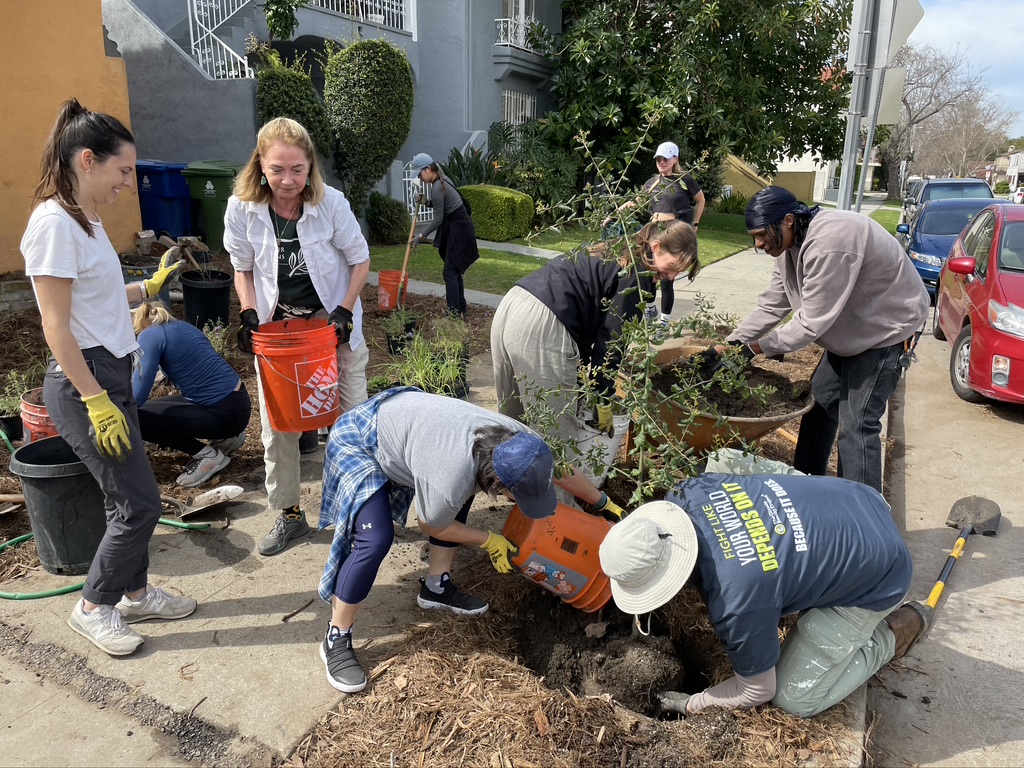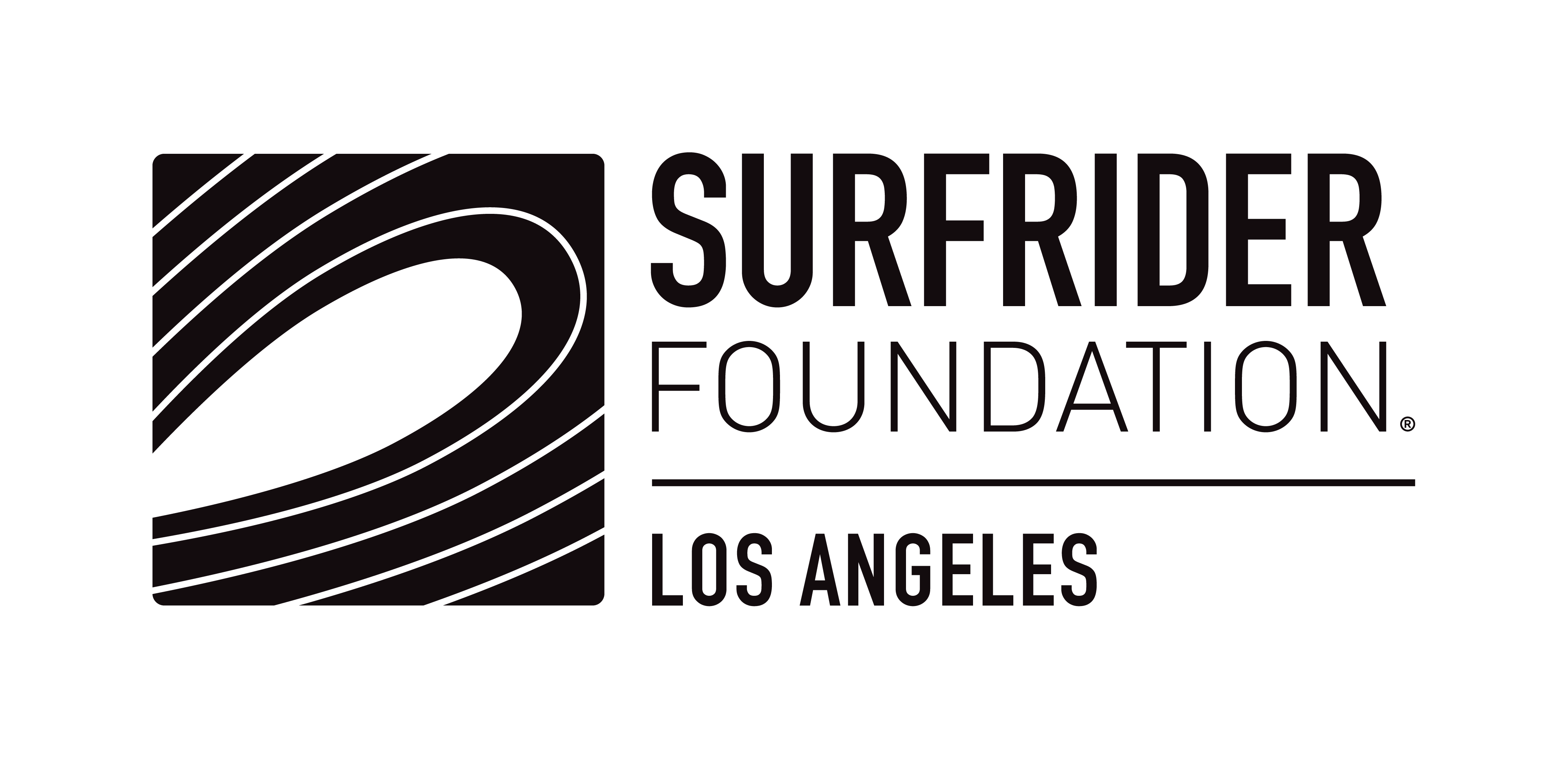
Surfrider's Ocean-Friendly Garden Program
A few Sundays ago, while helping volunteers from Surfrider Foundation and other environmental organizations transform a Leimert Park lawn into a garden filled with native plants and trees, I grabbed a shovel and joined a small group digging out a hole for a coastal live oak.
After taking turns driving the shovel into the dirt, we reached so deep down that, according to Charles Miller, who helped lead the project, we had uncovered soil that was hundreds of years old.
When Miller explained how sediment from the mountains above Los Angeles washes with the rain into the alluvial floodplain below, forming the land upon which this sprawling city was built, my mind started to wander.
I thought about what L.A. had looked like before it was L.A. and how it could look in the future. All around me volunteers were planting plants, laying down mulch, hacking away at decayed roots to make way for new ones, working together to revive this yard with the biodiversity that had thrived for millennia in Southern California. I imagined similar projects all the way down the street, a city block slowly blooming with green shrubs and languid oaks.
But then I thought about the extensive planning that went into just one lawn transformation – the coalition of organizations pooling resources, the hundred-plus volunteers who showed up over the course of a weekend. It would be understandably daunting for homeowners to go at it alone.
After all, the transformation in Leimert Park was something of an experiment. Last year, the Los Angeles Neighborhood Council Sustainability Alliance solicited applications from multi-family residential homeowners in underserved neighborhoods who wanted to replace their lawn with a native garden, said Miller, an NCSA board member. The goal was to guide the homeowner through the entire process so that they could maintain the garden and promote the benefits within their community, he added.
Marilyn Snell, an environmental journalist, and her husband, architect Gregory Williams, had been interested in native plants for years, so after hearing about the opportunity, they applied and were chosen as the pilot project, Snell said.
“We kind of wanted to dig in the dirt and see what we could do,” Snell said.
From there the NCSA coalesced a variety of partner organizations who recruited volunteers, donated plants and otherwise helped make the weekend-long transformation a reality.
Miller realizes the challenge of replicating such a dramatic transformation, but for those who want to dip their toes in the world of native plants, there are plenty of places to start, he said.
For people who don’t have a yard of their own, “there are lovely native container plants like hummingbird sage or native strawberry… that work really well in containers,” Miller said. “And you can get butterflies on your balcony if you consider planting something like that.”
And for those who do have a lawn, Miller recommends they visit calscape.org, a California Native Plant Society database where users can search by zip code for the plants most suitable to where they live.
As part of its Ocean Friendly Garden program, Surfrider Foundation also provides bountiful resources to help Southern Californians maintain sustainable yards and gardens, and rebates are available through sources like bewaterwise.com.
Snell also recognizes how ambitious the lawn transformation was, but she hoped that by nurturing a thriving native garden, she can inspire other residents to pursue similar projects of their own.
“Hopefully, projects like this will flourish and create more opportunities for people to come together and create patches of beauty and sustainability all through the city. We are so glad South L.A. was chosen as the pilot locale, not to mention that it was our yard that was picked!”
